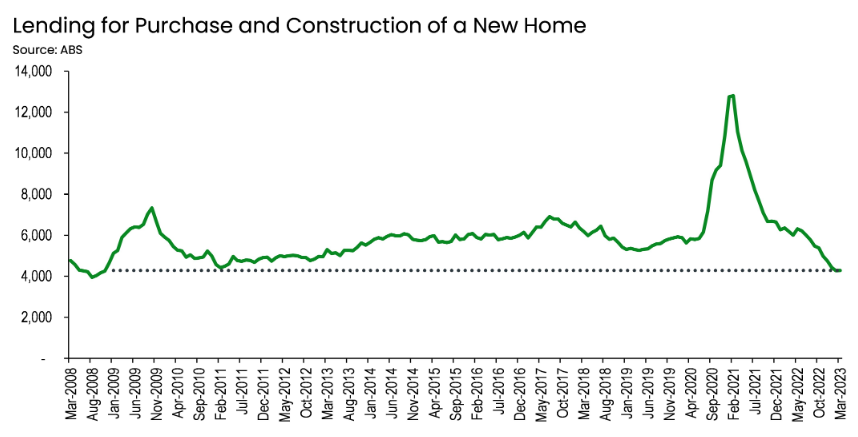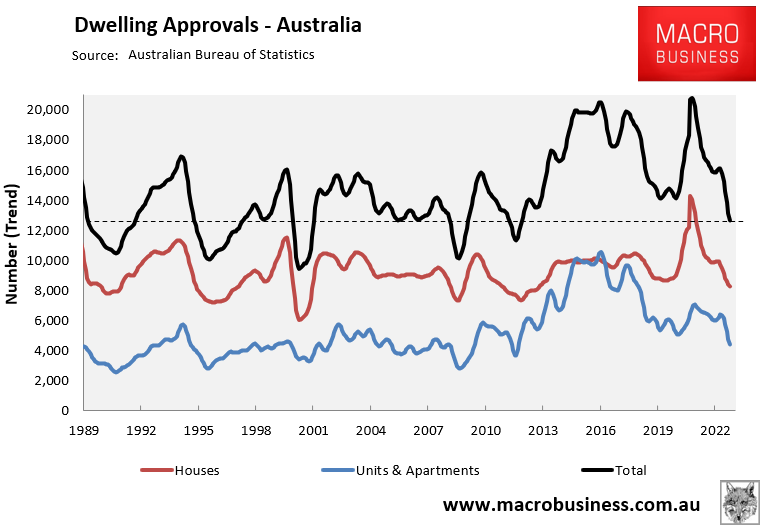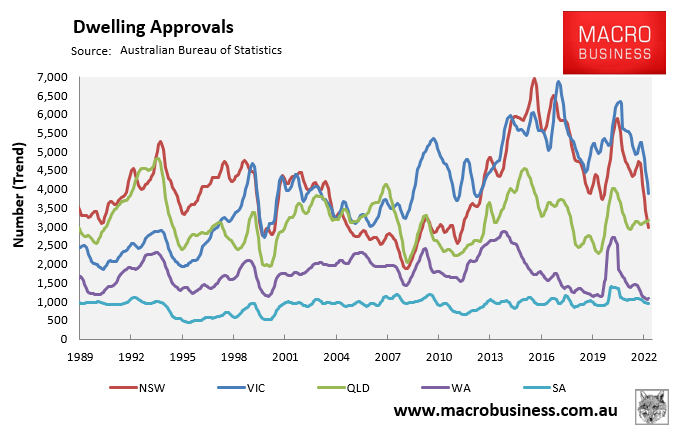On Friday, the Australian Bureau of Statistics (ABS) released housing finance data, which showed that the number of loans issued to purchase or construct a new home has collapsed 31% year-on-year and is now tracking at its lowest level in 15 years:

On Monday, more bad news arrived with the ABS releasing data on dwelling approvals, which fell to its lowest level since April 2012.
This was the sixth consecutive monthly fall in trend dwelling approvals.
House approvals have crashed to March 2013 lows and unit approvals have tanked to February 2012 lows:

Across the states, dwelling approvals have crashed hardest across the two major jurisdictions, namely NSW and Victoria:

NSW approvals have fallen to their lowest level since April 2012, whereas Victorian approvals fell to their lowest level since February 2012.
Housing Industry Association (HIA) Senior Economist Tom Devitt didn’t mince words when he said that “the first quarter of 2023 saw the lowest number of building approvals since 2012, just as population growth reaches a record high”.
“This imbalance will see the affordability and rental crisis deteriorate further”.
Indeed, this result is highly disconcerting given net overseas migration (NOM) hit its highest level in history in 2022, with the overwhelming majority of these migrants arriving in Sydney and Melbourne.
The upcoming federal budget is expected to upgrade its immigration projections, with a record 400,000 net overseas migrants now expected to arrive in Australia this financial year, followed by 315,000 in 2023-24.
The federal budget’s upgraded immigration forecasts are way above the 235,000 NOM projected in the September budget and January’s Population Statement.
The collapse in dwelling approvals, therefore, has arrived at the worst possible time, given home demand is surging in response to Labor’s record immigration settings.
Australia’s rental crisis and homelessness will only worsen as demand continues to surpass the industry’s ability to construct new homes.
We are witnessing the start of a total housing calamity.

